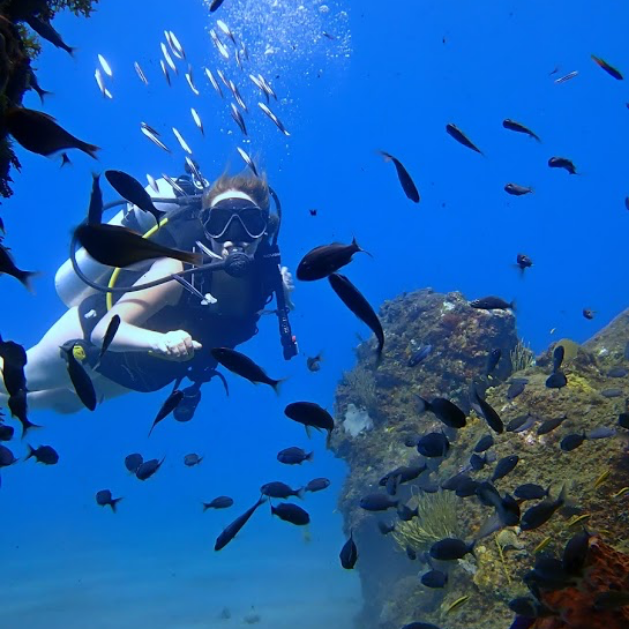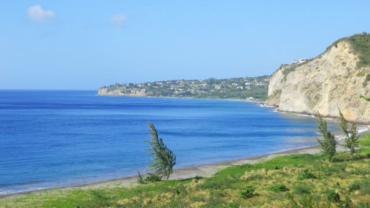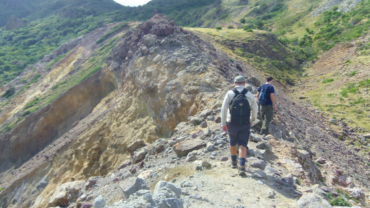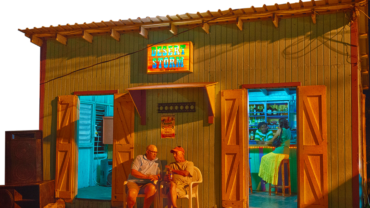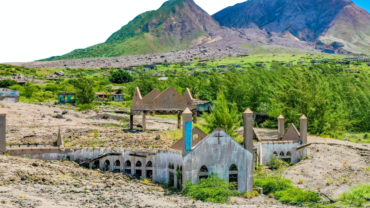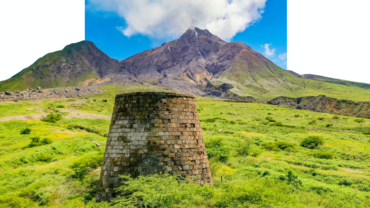Adventure Tourism in Montserrat
Bird & Turtle Watching
Despite its small size, Montserrat has a wide variety of bird habitats, which increases the range of species found on the island. The Centre Hills are of significant global importance and is one of the best places to go birdwatching in the Eastern Caribbean. Heading the winged cast of characters is the Montserrat Oriole, our national bird, made up by a range of hummingbirds, bridled quail-doves and other species. Binoculars and a camera are definite must-haves!
TURTLE WATCHING
From May to December, turtles can be seen lumbering their way to several beaches to release their eggs – truly a sight to behold! Popular nesting beaches for these gentle giants include Isle’s Bay, Old Road Bay, Lime Kiln Bay, Woodlands Beach and Bumkum Bay. Among the species that frequent the shoreline are Green, Leatherback and Hawksbill turtles.
BIRD WATCHING
Montserrat Oriole
(Icterus oberi)
This is Montserrat’s national bird which is critically endangered. Adult males are a black and yellow combination. Females and young males are olive green. Orioles are slim, long-tailed with a noticeable silvery-white tinge to the lower back. Found in the Centre Hills mostly in mesic forest and at high altitude in elfin forest, they build their nest under the leaf of the Heliconia, the island’s National Flower.
Brown Trembler
(Cinclocerthis ruficauda)
This is a medium-sized, long-tailed bird with a rich brown plumage. The long black bill is slightly down-curved and the eye is bright gold. The underparts are uniform buff brown. This bird is generally found in the Centre Hills forest and is a relative of the Thrashers, but it is solitary, quiet and shy.
Forest Thrush/Tannia Bird
(Cichlherminia lherminieri)
This bird has a rich brown back, wings, neck and crown. The legs and bill are bright yellow and the bird has a very prominent circle of bare skin around the eyes. The breast and belly have a distinctive bold scaly pattern, made by feathers with brown edges and white centres. Sometimes confused with the Scaly-Breasted or Pearly-Eyed Thrashers, it makes a strange and far-crying whooping song.
Bridled Quail-dove/Partridge
(Geotrygon mystacea)
This plump bird has a white streak below the eye. The neck and upper back are iridescent dark green and purple. The back and wings are brown and the upper parts are pink-buff. The eye and beak are red, with a pale bill-tip. This bird is usually seen on the forest floor in small patches in the Woodlands area, as well as in the Centre Hills Forest.
Green-throated Carib
(Eulampis holosericeus)
A small fast-moving hummingbird which looks like metallic green from a distance. Up close it has a metallic blue patch at the base of its green breast and a darker belly and tail. Its long bill is slightly down-curved but less so than in the Purple-Throated Carib. This is an active and restless bird.
Purple-throated Carib
(Eulampis jugularis)
The largest of the three species found in Montserrat, this hummingbird is mostly black with bright green wings and tail, and an iridescent purple throat. In the light, its throat is astonishingly bright but in the shade, it often appears uniformly very dark. The bill is long and down-curved. This bird prefers the forest but is occasionally seen in open areas and woodland patches in the lowlands.
Antillean-crested Hummingbird
(Orthorhyncus cristatus)
This is a tiny bird, dark green in colour with a short straight bill. Plumage is uniform but in the right light appears iridescent. The crest on the crown is striking when seen. Females are duller in colour than males, with less obvious crests, and greyish underparts. It is found in forests but also around the edges of woodland, in gardens and in farmland.
Scaly-breasted Thrasher
(Allenia fusca)
This is a bird with a uniform brown on its back, head, wings and upper tail. Its eye is bright yellow and the bill is dark. The underparts are scaly-brown with a whitish pattern. It has a very distinctive single note call. Although primarily a forest bird, it is fairly common throughout Montserrat in gardens, farms and forests.
Pearly-eyed Thrasher
(Margarops fuscatus)
This highly vocal, sometimes secretive bird is distinguished by its brown plumage and heavy streaking below. It has a large, pale bill and has varied calls, including high thin whistles, brief chirps, and harsh or guttural scolds.
Caribbean Elaenia
(Elaenia martinica)
This is a small and nondescript bird, it is mostly olive grey, with a paler under belly. It has two whitish wing bars and an inconspicuous white crest on the top of the head. It is primarily a bird of the dry and semi-dry forest in the lower areas particularly in more open sunny patches, and on the edges of clearings. This bird is a fly-catcher and it gives a penetrating single whistle and has a cheery song phrase – “chwee chee chu chu”
Scaly-naped Pigeon
(Columba squamosa)
This is a large slate-grey coloured mountain pigeon with a scaly, purple-red patch on the side of the neck, hence its name. It has a distinctive call with the last three syllables sounding like “Who are you?”
Yellow Warbler
(Setophaga petechia)
This is a small to medium-sized bright yellow bird with black dots. The male has a more striking coloration. This bird favors dry forest and makes a sweet whistling call. It constructs a basket nest of grass which it attaches to the Acacia plant.
Boat Tours in Montserrat
Experience Montserrat by sea – a perfect balance of adventure and relaxation. Let your boat operator customize an itinerary for you and be mesmerized by the beautiful and dramatic cliffs, coves and landscapes. Or take the popular, pore-raising Volcano Boat Tour down to Plymouth, Montserrat’s capital and get a surreal view of the buried city. View the abandoned ruins in the Exclusion Zone overshadowed by the awe-inspiring Soufriere Hills Volcano.
Water Sports in Montserrat
Montserrat’s stunning beauty extends down from its mountains to its beaches and then underwater to its vibrant coral reefs. One of the Caribbean’s really unique dive destinations, Montserrat is blessed with healthy reefs and offers the opportunity to explore them in a relaxed way.
Ideal for both beginner and the seasoned divers, Montserrat’s dive operator provides highly interactive, personal, uncrowded and un-rushed tours. You can do your full PADI dive certification, and then jump into our aquarium – there are 50 dive sites to choose from! – and become one with tropical fish, corals, sponges and critters.
A visit to Montserrat’s reefs often will provide a meet-up with graceful sea turtles and stingrays just chilling out, surrounded by a kaleidoscope of fish cruising the dramatic coral and sponge encrusted structures created by the island’s volcanic activity. Come explore our undersea world for a day or a week, it will not disappoint!
The relatively calm Caribbean Sea in the Little Bay area and the surrounding dramatic cliffs make stand-up paddle-boarding and kayaking an awesome treat. Take your snorkel, mask and fins with you in your kayak and head on over to our only white sand beach, Rendezvous Bay and enjoy some exhilarating snorkeling.



